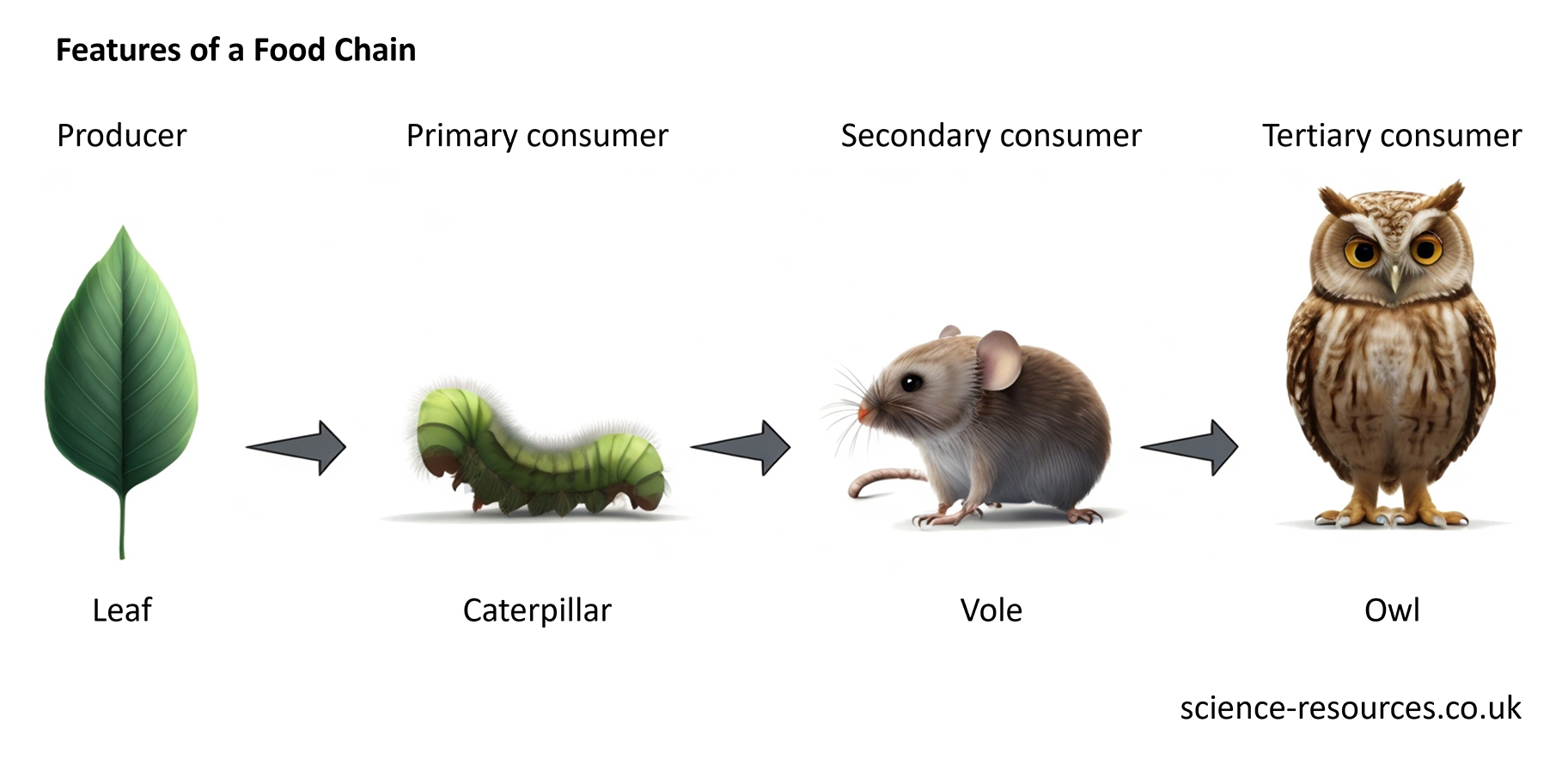Food chains and webs
Food chains and webs The organism at the beginning of the food chain is called the producer. These organisms produce their own food, through photosynthesis. Green plants are the most common producers, but some bacteria and algae can also act as producers. A leaf is the producer in the example food chain of leaf à caterpillar à vole à owl. Photosynthesis provides the energy for most living things on Earth. The loss of energy
A food chain is a series that shows who eats who in an ecosystem, so it shows the feeding links between living things.
In a food chain, one living thing eats another, and the energy from the eaten living thing goes to the eater. So, a food chain also shows how energy moves from one living thing to another.
Each living thing in the chain eats the one below it and, in turn, is eaten by the one above it. But a food chain is just a small part of a bigger network of feeding links, called a food web. Let’s look at a simple food chain:
The organisms in this diagram are joined by arrows which show the transfer of energy in food between them. The stages in the food chain are called trophic levels.
Every other organism in the food chain is called a consumer. A primary consumer eats a producer. The caterpillar is the primary consumer in the example food chain. It is then eaten by a secondary consumer, which is the vole.
The owl is the tertiary consumer (which eats the secondary consumer). There can also be a quaternary consumer (which eats a tertiary consumer), but not in this example.
Animals that are hunted and eaten are prey, and they are eaten by predators. The last consumer at the top of the food chain is called a top (or apex) predator and nothing else eats it.
Energy is lost in different ways at each step of the food chain.
Organisms need energy to move Some parts of the organism are not eaten Energy is lost through waste (e.g. urine and faeces) Organisms need energy to stay warm So, the energy that is lost cannot be passed along the food chain. There are usually only four to five organisms in a food chain, because there is not much energy left at the top of the food chain.
Food webs Features of a food web Some organisms, such as the snake, have just one consumer. Others, like the grasshopper and mouse, have more than one.
Most populations of organisms that live in a habitat usually have more than one food source. They usually consume more than one organism from the trophic level below. This means that there are almost always more than one food chain and these are interlinked into a food web.
A food web is a network of many food chains that are linked together. This makes ecosystems more able to cope with changes in the environment. The loss of one species from a food chain does not always break the whole chain. That’s because the other species might be able to find different food sources in the bigger food web. However, the loss of a species can still affect the rest of the ecosystem.
The above food web is made up of lots of food chains, including:
Suummary: